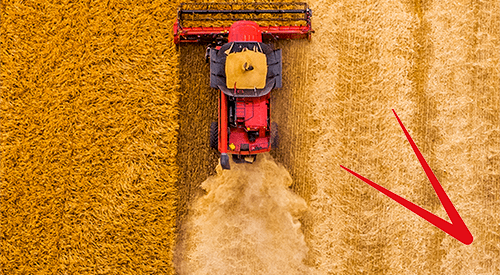A deep-dive into the intricacies and practicalities of working out the inheritance tax of a wind farm.
One of the advisory group members was asked to prepare the inheritance tax return for a long-standing client last year. An onerous undertaking at the best of times but this client owned a substantial area of forest and had leased a proportion of this for a wind farm several years previously. Their first thought was that no inheritance tax reliefs could be claimed for the land on which the wind farm stood but they then turned to look at the evidence.
First the valuation report. At first glance this suggested that less than 50% of the land was used for the forest and the value of forest was less than 50% of the total value – yes, you’ve got it, they were considering if a claim could be made along the lines of Balfour. A more detailed review of the valuation report threw doubt on the valuer’s interpretation of the land usage. The initial valuation report covered a total area of 425 acres of which 180 acres were described as commercial crop area and 90 as the area for the wind farm. This raised a number of questions:
- What was the rest of the land used for? Well this included clear fell areas and open areas. The valuer was asked about plans to replant the clear fell areas and whether the open areas include areas for processing felled timber prior to transport and access roads for the forest.
- Why was acreage for ‘broadleaves’ not considered to be part of the forest.
The result, an amended valuation with:
- 335 acres of commercial woodland and 90 areas of windfarm land.
- More than 50% of the total value for woodland and growing timber.
The second task was to produce accounts for the woodland to both demonstrate that this was run on a commercial basis and see if more than 50% of the income came from timber sales. This resulted in a detailed review of bank statements and VAT returns for the forest – after all income from woodlands is not taxable so no accounts had previously been prepared.
The result? Well, going back over a longer period than the traditional three years (after all growing mature trees takes time) and bringing in the trees felled on the wind farm site indicated that more than 50% of the income had been earned from the timber sales.
Then a review of the Balfour case to see the areas considered:
- Was more than 50% of the area used for the business – YES
- Was more than 50% of the value used for the business – YES
- Was more than 50% of the income generated from the business activities – YES
- Was more than 50% of employee / proprietor time used on the business activities – although the deceased had been ill and elderly his nephew went on annual visits to the forest reporting back on plans for replanting etc. and the forest was managed by an agent
- Was there a single bank account into which both income from timber sales and wind farm lease income was banked – YES
An inheritance tax return was duly completed with a claim for business property relief on the whole area and a detailed explanation of the reasons for the claim.
The conclusion, the return was picked up for a Revenue enquiry but their focus was on the amount of the business bank account that qualified for business property relief as this was higher than a year’s normal expenditure. A quick compromise on this and the enquiry was closed.
And the lesson to be learned, be prepared to challenge professional valuations and to consider if cases fit the circumstances you have.
Elizabeth Peters
The views expressed are the author’s and not ICAEW’s.


